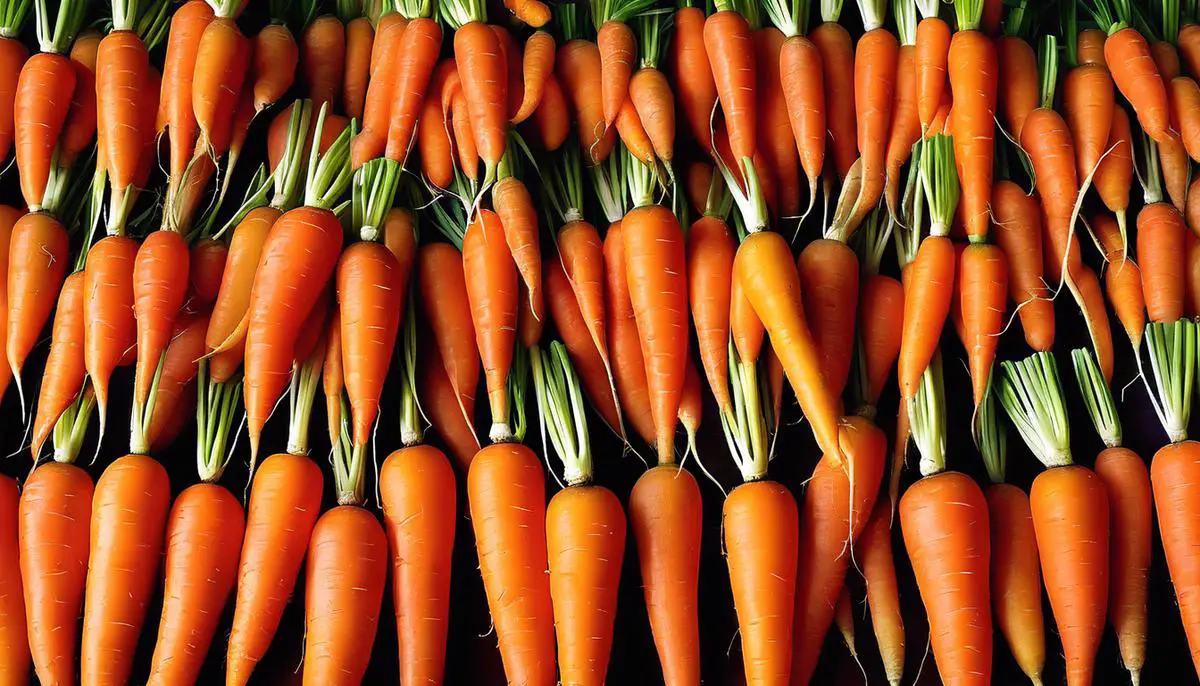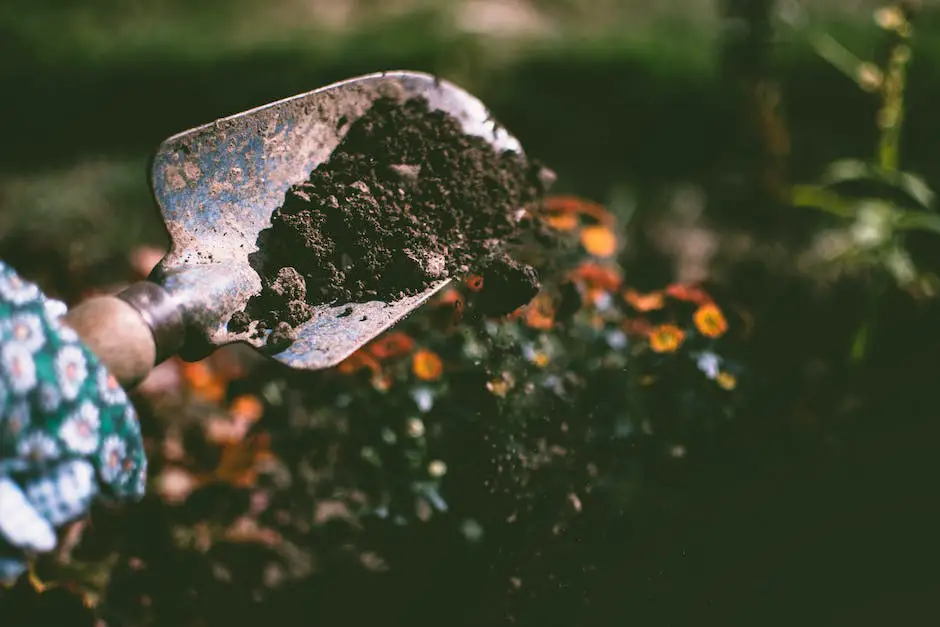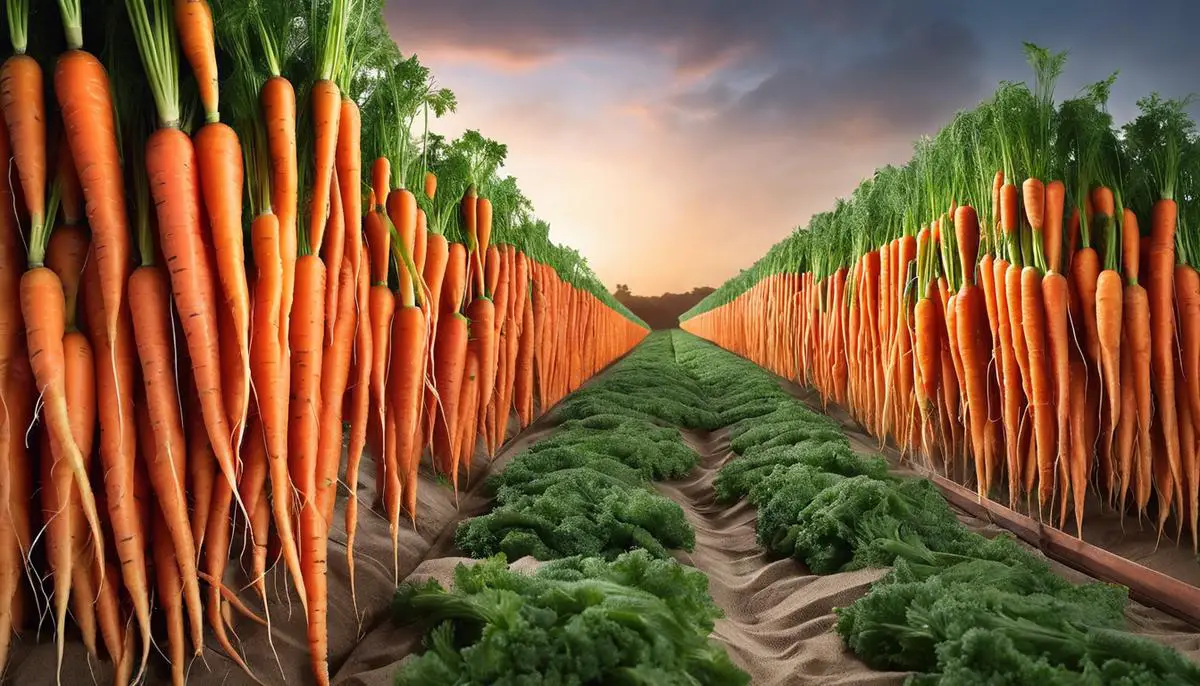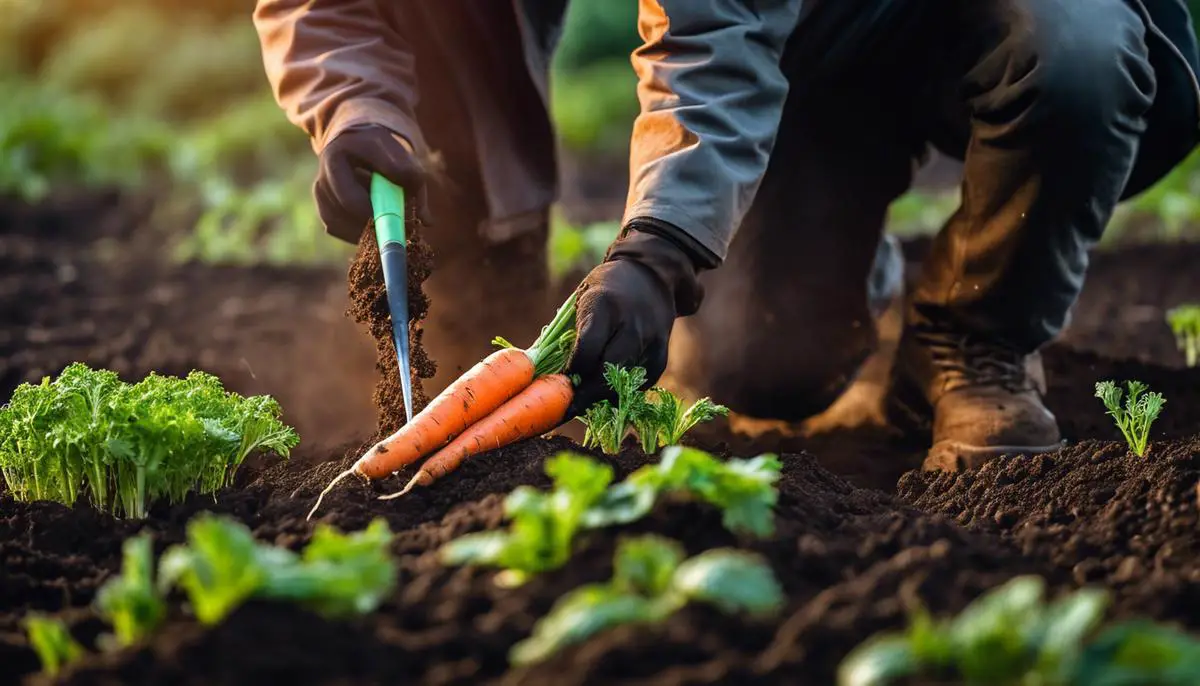Carrots, with their bright orange color and crunchy texture, are a staple in many kitchens. Growing your own carrots can be an incredibly rewarding experience, offering both a sense of accomplishment and a uniquely fresh flavor that’s hard to match. However, to maximize the success of your crop, a comprehensive understanding of ideal planting conditions, harvesting protocols, and post-harvest care techniques is essential. Whether you are a novice or an experienced gardener, this essay can serve as a valuable guide, providing detailed insights on how to optimally grow, harvest, and store carrots, ensuring they maintain their taste, texture, and nutritional value.
Optimal Planting and Growing Conditions
Unearth the Joy of Growing Your Own Carrots: A Comprehensive Guide
Sharing the secret to nurturing flawless carrots is truly a labor of love. After peeling back countless layers of knowledge and experience, one start realizing the art and science of vegetable gardening. There’s just something extremely rewarding about growing your own carrots, those small, bright spears of earthy goodness!
Reader Poll: What online courses would interest you?
Carrots, though humble, are among the most immensely satisfying crops to grow. Not merely because of their diverse uses, but also their highly nutritious nature and their unique growth habit — maturing underground with only their leafy green tops poking out!
Begin with selecting an ultimate growing spot. Carrots are sun-lovers, demanding a full six hours of direct sunlight daily for optimum growth. More warmth results in sweeter carrots. Partial shade could work, but will slow the growth rate and affect the taste.
Soil quality plays a pivotal role in the success of growing carrots. Given their growth habit, they absolutely need deep, loose, and rock-free soil. Heavy clay, stony, or compacted soil is a definite no-no if straight, unforked carrots are the goal. Carrots love well-drained soil with a pH range of 6.0 to 6.8. It’s essential to make sure the soil is free of stones, hard clumps, or any obstacles that could obstruct or distort their growth.
Subscribe to our newsletter!
Spacing, another crucial aspect, depends on the variety being planted. Generally, the seeds should be sown half an inch deep and 1-2 inches apart in rows that are 1 foot apart. This gives the fledgling plants enough room to stretch out and grow without overcrowding or competition for nutrients and water.
Providing carrots with consistent, even watering can make or break their growth. Carrots do their best growing in consistently moist (but not water-clogged) soil. Inconsistent watering can lead to cracks or splits in the carrot root. The real trick is to deliver about one inch of water per week, particularly during the first few weeks post sowing when the seeds are developing.
As far as fertilizer is concerned, carrots do not require heavy nourishment. A light application of slow-release granular fertilizer at planting time will sustain their growth. But beware, over-fertilization, especially with high nitrogen fertilizers, may result in hairy, rough, and less tasty carrots.
Combating pests and diseases is your next challenge. Carrots can be affected by pests like carrot fly, and diseases like leaf blight or root knot nematodes. Crop rotation and the timely removal of plant debris can help reduce the impact of these issues significantly.
Harvesting the carrots at the right time is key. They can be harvested early for tender baby carrots or left to mature for larger, robust roots. Generally, carrots take about 50-80 days to mature depending on the variety.
There’s no grand secret to growing great carrots — it’s all about understanding their needs and meeting them with patience and time. Notwithstanding the potential challenges, the joy and pride of plucking home-grown, crispy, sweet carrots out of the soil are absolutely worth the effort. Happy gardening!

Proper Harvesting Techniques
Mastering the Art: Techniques for Successfully Harvesting Carrots
Growing your own carrots provides a delight all its own: soil-speckled hands gently pressing seeds into the ground; the bright green lift-off of shoots reaching toward the sun; and, of course, the remarkable transformation of seeds into earthy, fragrant, and sweet roots. But the cherry on top of this rewarding experience? Harvesting the crops! Let’s delve into some of the best practices for reaping your crunchy, orange jewels from the earth.
Alright, carrot enthusiasts! You’ve identified the perfect sun-kissed spot, you’ve enriched the soil, spaced your seeds with precision, and attended diligently to watering and fertilization schedules. Keep your eye on the prize, though, because proper harvesting techniques are what bring it all home… literally!
First off, timing is everything and can make the difference between delectable tender-crisp carrots and woody or split roots. Typically, carrots are ready to make their way out of the ground about 70-80 days after planting. However, the real gauge is size–check the diameter at the top of the root just below the leafy greens. If it’s close to half an inch, congratulations! Your patience has paid off.
The actual process of harvesting involves more kindness than force. Start by saturating the bed with water, making the extraction process less stressful for these root-dwelling treasures. Using a garden fork is recommended as it aids in mobilizing the soil around the root, allowing a gentler pull. Slide it down into the earth about a foot away from the carrot, then gently lift the soil. This loosen up the soil and helps to gladly give way to its valuable charge.
Now comes the part we’ve been eagerly waiting for: pulling out the carrot! Hey, keep the excitement in check. Remember, carrots are fragile. Grab the root as close to the ground as possible to reduce the risk of snapping the greens off the top. Slowly and steadily pull the carrot, feeling its journey from nestled in the soil to welcomed in your hands.
Once you’ve harvested your first carrot, rinse away the dirt under lukewarm water, being mindful not to scrub too hard or the skin might come off. Also, don’t forget to slice off the topside as they can pull moisture from the root and cause it to wilt more quickly.
What’s better than harvesting carrots? Relishing them in your favorite recipes! From smooth soufflés to classic carrot ginger soup or even a crunchy, fresh carrot slaw, your home-grown carrots will undoubtedly add a vibrant touch.
Savor every moment of the journey, from sowing to harvesting, and crunching! It’s these little details that embed such beauty and joy in the simple hobby of growing your own carrots. Harvest well and eat heartily, fellow garden aficionados. There’s nothing better than knowing you’ve nurtured and produced your own wholesome, flavorful food. Your hard work and patient attention have not merely produced carrots; you’ve grown satisfaction and pride. Now, that’s something to celebrate. Happy harvesting!

Post-Harvest Care and Storage
Unveiling the Secrets of Carrot Care Post-Harvest
There is nothing quite as thrilling to the ardent gardener as the moment of reaping what has been sowed. So, you’ve taken your carrots from seed to sprout, nurtured them with time and tenderness, and now, the sweet, orange rewards of your labor are nestled securely in your hands. Yet, the work doesn’t end at harvest. Proper care and storage of your hard-earned carrots not only enhances their flavor but also preserves their freshness for future use.
Immediately following your successful harvest, begin by removing the leafy tops. This is an essential step as leaving them intact drains the carrot roots of moisture, leading to a quicker deterioration. Make a swift cut, about an inch above the crown, and discard the greens (unless you plan on using them in your culinary exploits, they make an excellent addition to homemade pesto or stir-fries!).
Next, resist the urge to wash your carrots. Yes, you read that right! Washing them right after harvest prematurely adds moisture that can lead to rot. Instead, gently brush off any excess soil and pat them dry. Any stubborn dirt patches can be lightly scraped away with a plastic scrub brush.
It’s storage time! Store your fresh carrots in a cool, humid place – think a cellar, a fridge, or a special drawer in the kitchen specifically designed for vegetables. Here’s a top carrot enthusiast’s secret: surround your carrots with damp sand or peat moss. This innovative method ensures your roots stay crisp, moist, and perfectly punchy for months. For an added layer of protection, place them in perforated bags; these allow for appropriate airflow and prevent the carrots from drying out.
If you happen to be one blessed with a surplus of carrots than you can consume, consider preserving them in the form of freezing or canning. Blanched carrots freeze exceptionally well, and the process helps preserve their color, texture, and nutritional content. For the fans of the traditional canning method, it’s the perfect way to ensure a steady supply of home-grown carrots throughout the colder months.
Growing carrots isn’t merely about the prospect of a lush, flavorful harvest. It’s a sacred dance between mother nature and the gardener – a testament to patience, perseverance, and passion. By properly caring for and storing your carrots post-harvest, you enrich your carrot-growing journey and ensure every part of the process is cherished and celebrated.

From the seedling stage to the dinner plate, each step in the journey of a carrot matters. Providing the optimal planting and growing conditions allows the carrot to thrive and reach its full potential. Equally, using correct harvesting techniques minimizes the risk of damage to both the mature vegetables and future crops. After being harvested, following appropriate cleaning and storage procedures can significantly enhance the shelf-life and maintain the quality of the carrots, making every bite as fresh and flavorful as possible. Understanding these aspects of the process is not just about growing carrots, it’s also about cultivating a love for gardening and an appreciation for the food we eat.

